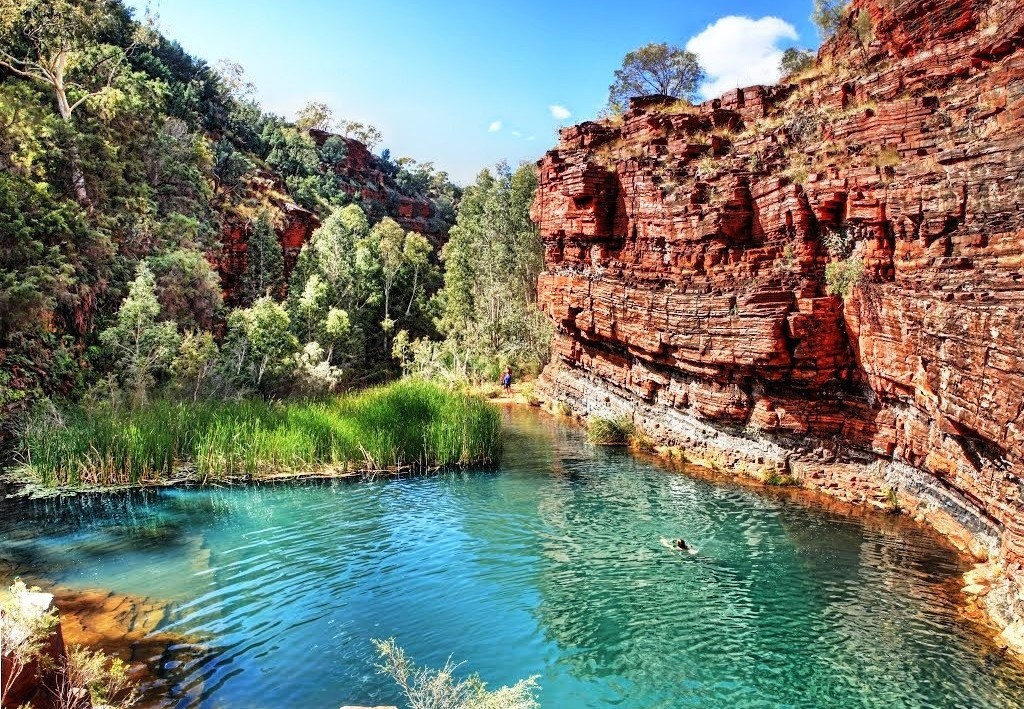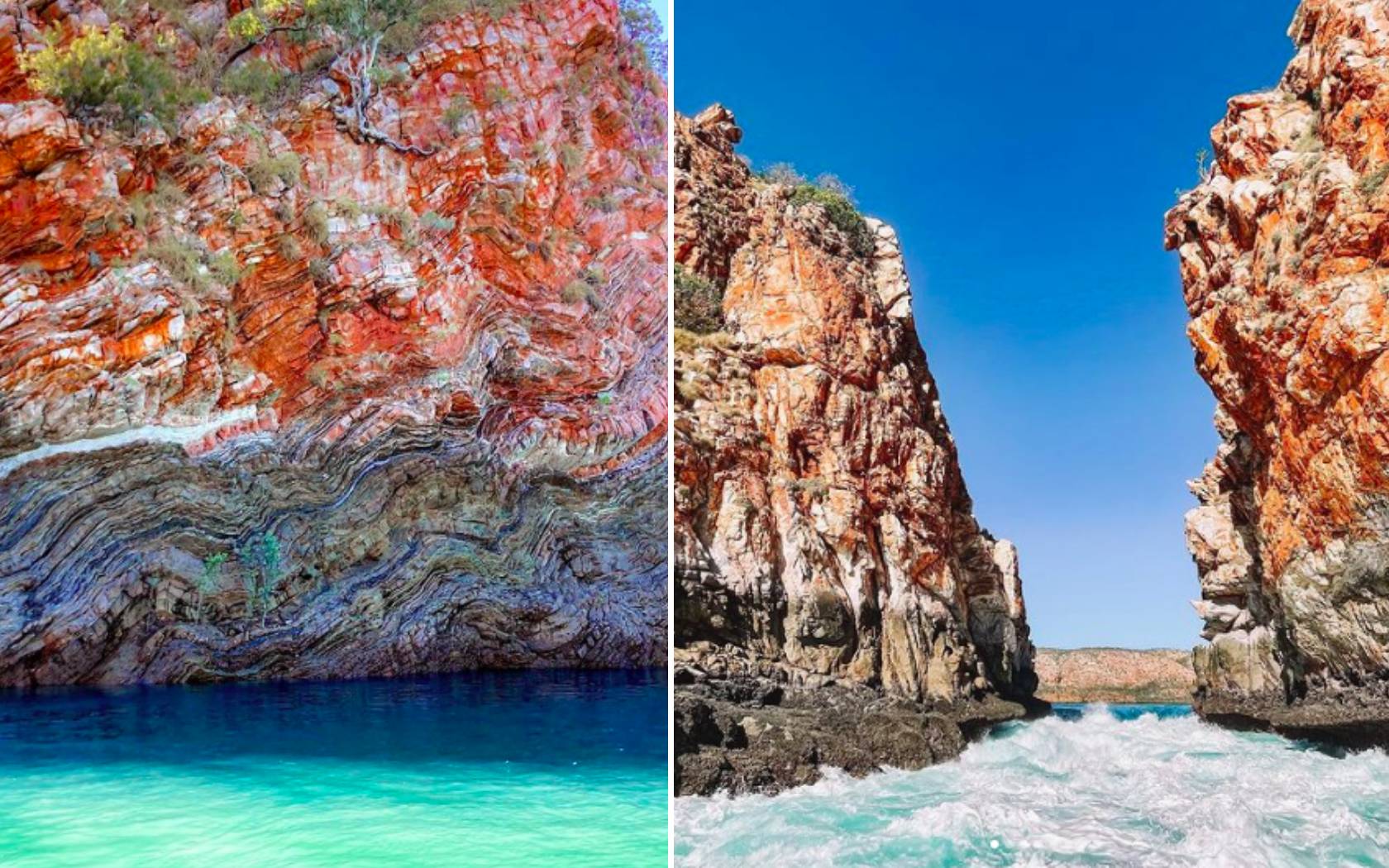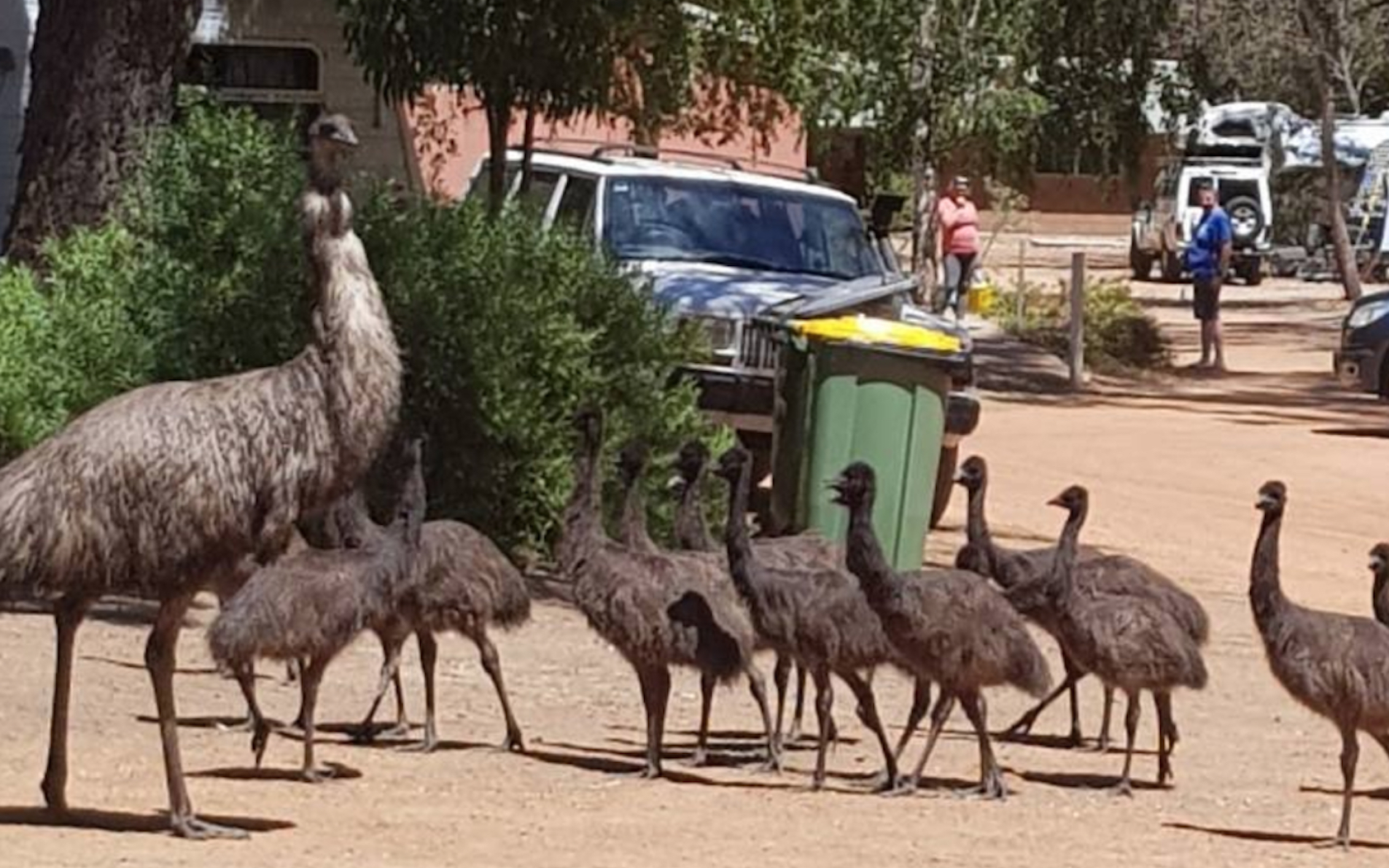This Lush Oasis Is Australia’s Best-Kept Secret

Kate is a Perth-based journalist who has worked with Sunday…
While many adventurers may dream of exotic locations far beyond Australia’s shores, the explorers among you would do well to remember that there are world-class experiences readily available right here in our own backyard. Way out west in WA’s Pilbara region, for instance, lays an epic natural playground complete with exquisite scenery, diverse native wildlife and majestic ancient landscapes, just ready-and-waiting for you get rugged, hit the road and discover it.
The largely untouched Karijini National Park comprises a mind-boggling 627,422 hectares, with prehistoric rock dating over 2500-million-years-old, and with evidence of early occupation by traditional owners for more than 20,000 years. This rich and significant history provides the backdrop to a classic Australian adventure characterised by red rock escarpments, sweeping gorges, surprisingly lush greenery and steep blue waterfalls leading to deep, cold natural pools.
So, if you want something different and like it a bit rough, read on.
How To Get Way Out West
Make your way to Karijini by flying into Paraburdoo, Port Hedland or Karratha. Paraburdoo is the closest (just over two hours from the park), but a Karratha route will allow you to take in some other sights along the way – Millstream-Chichester National Park is just outside Karratha town, which is definitely worth a look-in (the park’s Python Pool watering hole is a local’s favourite).

Karratha is about a five-hour drive from Karijini, which takes you to the park via Tom Price, and is accessible using the Rio Tinto Access Road. Permits to use this road can be obtained from the Karratha’s Visitor Centre or online on Rio Tinto’s website.
Tom Price is the closest town to Karijini, and is a mandatory drive through on the way – it’s a sweet quintessential country town which is home to lovely locals, quaint parks and some particularly striking fauna including kangaroos, snakes, lizards, brumbies and more-than-slightly-terrifying birds of prey. If wildlife’s your thang, you’re definitely in the right place.
What To Bring & When To Go
For all you Eastern states types, newsflash: WA be hot. Like super-hot. During the warmer months, the mercury in the Pilbara region (where Karijini lies) can top out at over 50°C, which is not only hot enough to melt your face off, but also hot enough to do some very serious damage if you are not properly prepared.
The Department of Parks and Wildlife recommends visiting Karijini in late autumn, winter, and early spring (seriously, don’t even think about it in summer). As a guide, April is ideal. The days are warm but not suffocating, and the nights are just cool enough to need a cardigan – perfect.

Accommodation is available at various camping grounds, or if you’re feeling fancy, the Karijini Eco Retreat has luxury digs and deluxe facilities (be warned, they book up quick). Campers are warned about hungry dingos foraging about in campsites, so hide yo’ kids, hide yo’ wives, etc (or at least zip up your tents and don’t leave food inside).
Equipment wise, get there in a 4WD with spare tyres and bring enclosed shoes, sunscreen, sunglasses, backpacks with cold water and first aid kits. Bug spray is also a must, but the flies will be jerks regardless so don’t get mad – just let them love you and try to keep them out of your nostrils.
I’m Here, Now What?
There are endless options to keep you occupied during your Karijini adventure, but perhaps the most popular spot is Dales Gorge and Fortescue Falls which is family-friendly and generally awash with tourists. The gushing water is surprisingly blue here and the swimming hole provides a welcome opportunity to cool off after you’ve made your way through the heat of the day.
After your splish splash, if you hike in around 300 metres behind the falls (it’s quite a cool trek through overgrown, drooping trees that give off a very authentic bayou-wilderness vibe) you’ll reach Fern Pool, which is utterly gorgeous. The pool lies in a secluded enclave surrounded by bright red-purple rocks that offset the vivid blue colour of the deep pool, making the water glow like an azure oasis. The pool also has two waterfalls to frolic under and is surrounded by lush ferns, trees and plants. It’s intimate. It’s awe-inspiring. It’s absolutely breathtaking.

Wildlife abounds here too. A particularly fun time can be had by observing foreign travellers gazing up into the trees to coo over hundreds of cute sleeping birds, only to realise they’re actually hundreds of considerably-less-cute bats. Plus, if you stick your feet in the water, hungry and helpful little fishies will come up to your feet for a cheeky-yet-friendly nibble to clean up your dirty soles. Bless them.
Other highlights include Weano Gorge, Oxer Lookout, Hancock Gorge and Joffre Gorge – there is assisted wheelchair access through some of these locations as well. Walking trials are colour coded to indicate difficulty, and maps are available at the Karijini Visitors Centre.

While it is certainly an effort to get yourself there, Karijini overdelivers on a promise of an unforgettable experience – special mention has to go to what is surely the clearest night sky on this earth, which gives city siders a chance to see the moon, stars and Milky Way in all their unpolluted glory.

Check out Qantas flights to Perth where you can connect on to Karratha.
Kate is a Perth-based journalist who has worked with Sunday Times, Perth Now, The West Australian's regional papers, WA Transport Magazine and Colosoul Magazine. She is an avid traveller, having visited Europe, Eastern Europe, North America and Canada, along with domestic destinations within Australia.








